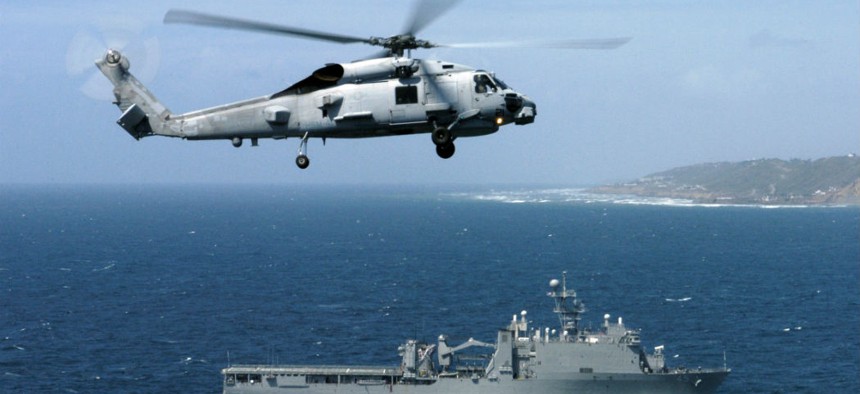Navy extends laser sea mine detection technology
Northrop Grumman Airborne Laser Mine Detection System uses laser light pulses to map bodies of water potentially holding mines.
The Navy is increasing efforts to enhance the Airborne Laser Mine Detection System (ALMDS), which detects and classifies near-surface mines in order to increase safety and effectiveness of littoral zone and amphibious operations.
Built for installation in MH-60S helicopters, the ALMDS’s ability to detect and classify near-surface, moored sea mines is crucial in conducting far-reaching reconnaissance and amphibious operations.
According to Northrop Grumman’s ALMDS program description, the system uses the forward motion of the helicopter to create 3D image analysis of the volumes of water closest to the surface.
Laser light pulses are sent out and received by streak tubes in the external equipment pod to map bodies of water potentially holding mines. The system is attached to the aircraft by Bomb Rack Unit 14 (BRU-14)s, and primary and auxiliary umbilical cables.
The ALMDS allows MH-60S helicopters to conduct operations without pausing to process the streamed information or having equipment in the water. The system can give accurate geo-location data for any mines found in order to facilitate neutralization and can operate in both daytime and nighttime.
Thus far, it has been an asset for naval maneuvers and mine detection in littoral zones, or a shallow area where sunlight reaches the seafloor leading to growth of aquatic plants, constricted water ways that can become operational choke points, and areas that involve amphibious coordination.
According to a Marine Corp presentation on amphibious doctrine, such operations are launched from the sea with the goal of introducing a landing force, and the ability to detect and destroy potential mine threats is key to the effectiveness of these missions.
Any options for improvement explored under this contract modification, expected to come to fruition by March 2019, will only enhance the operational importance of the ALMDS.
The heightened focus on ALMDS comes in the form of a $17,848,867 modification to an existing Navy contract with Northrop Grumman Systems Corp., Aerospace Systems to allow for the exploration of further developments of the ALMDS.
The additional ALMDS work is to be conducted through a cost-plus-fixed-fee modification of a firm-fixed-price contract, meaning that this aspect of the contract could be subject to cost reimbursement of a previously agreed upon amount that is fixed regardless of cost, but adjustable based on changes in the contracted work to be performed.
The majority of funding is allocated from the FY17 Pentagon budget for Navy Procurement, Research, Development, Test and Evaluation, and Operations and Maintenance. However, about $1.7 million designated funds will expire at the end of the current fiscal year.





